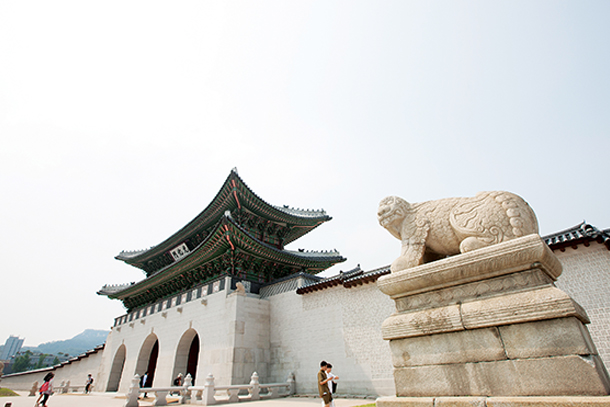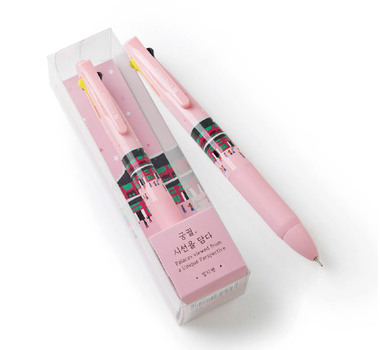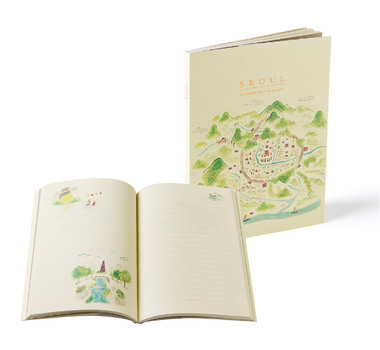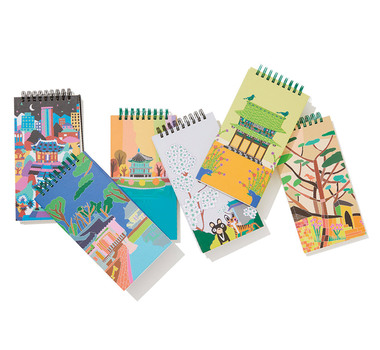
-
Whether they are an international guest visiting Korea or a local tourist from out of town, palaces are the first place people head to when visiting Seoul. Seoul was the capital of the Joseon Dynasty, which lasted for 600 years, so you can see the palaces of kings that have stood throughout the ages. Standing tall in the middle of the modern, dynamic Gwanghwamun area full of skyscrapers, Gyeongbokgung Palace is a striking contrast. It is one of the five Joseon-era royal palaces standing within the four gates of Seoul. Other palaces include the Deoksugung Palace, the UNESCO World Heritage Site of Changdeokgung Palace, Changgyeonggung Palace, and Gyeonghuigung Palace. On a nice day, it's not uncommon to see tourists dressed up in hanbok (traditional Korean clothes) and taking pictures at the palace.
-
But all this is not to say that Seoul only has historic sites. Seoul’s most notable strength as a tourist site is that it allows you to enjoy nature, such as mountains and rivers. Many major cities worldwide are formed around rivers, such as London’s Thames or Paris’ Seine, but not many are as big as Hangang River. Indeed, the Thames is about 265m in width, while the Hangang River’s width is 1km. The river is also home to parks and waterside facilities like Yeouido, Banpo, Ttukseom Island, and Nanji Hangang Park, which allow you to get the most out of Hangang River’s charms.
-
Want to see a more modern landmark? Head to Dongdaemun Design Plaza (DDP). Designed by Iraqi-born architect Zaha Hadid, it looks like something out of the world of the future, with no straight lines or walls between the exterior and interior. The DDP comprises a museum, a lounge, and shops for souvenirs. All these show that Seoul is a dynamic and colorful place where traditional and modern, natural and artificial landmarks meet in one place.

If you find yourself in Seoul, why not purchase some stationery to help you remember the city? Notepads, writing instruments, and other items bearing Seoul tourist sites like historic palaces and N Seoul Tower allow you to reconnect with Seoul every time you use them. Other products include files, binders, cards, postcards, desk ornaments, and books.
 |
“PALACES THAT CAPTURE THE GAZE” MULTIPEN
This multipen is inspired by the view of Gyeongbokgung Palace, created by a designer with an autism spectrum disorder (ASD). Part of the proceeds from the “Palaces that Capture the Gaze” series goes to the rehabilitation of people with ASD.
|
 |
L'APRÈS-MIDI TRAVEL JOURNAL - SEOUL
This travel diary includes warm and fuzzy illustrations of Seoul, created by illustrator Han Wooran. The diary has four different covers, so one has a wide variety of choices in design; “The King and the Queen,” depicting a Joseon-era king and a queen in front of Injeongjeon Hall of Changdeokgung Palace; “Seoul Tower,” depicting N Seoul Tower; “Old Seoul,” which recreates the historic capital of Hanyang during the Joseon period; and “63 Building,” which depicts the building standing against the Seoul International Fireworks Festival. The pages themselves also bear illustrations made by Han.
|
 |
“PALACES THAT CAPTURE THE GAZE” NOTEPAD
These notepads come in six different designs, all bearing beautiful illustrations of Seoul’s palaces like the Injeong jeon Hall of Changdeokgung Palace, Hyangwonjeong Pavilion of Gyeongbokgung Palace, and Gyeongbokgung Palace at night. These shed new light onto the familiar palaces of Seoul, while their size allows them to fit in one’s hand. For an additional fee, you can also choose paper or pouch packaging.
|





